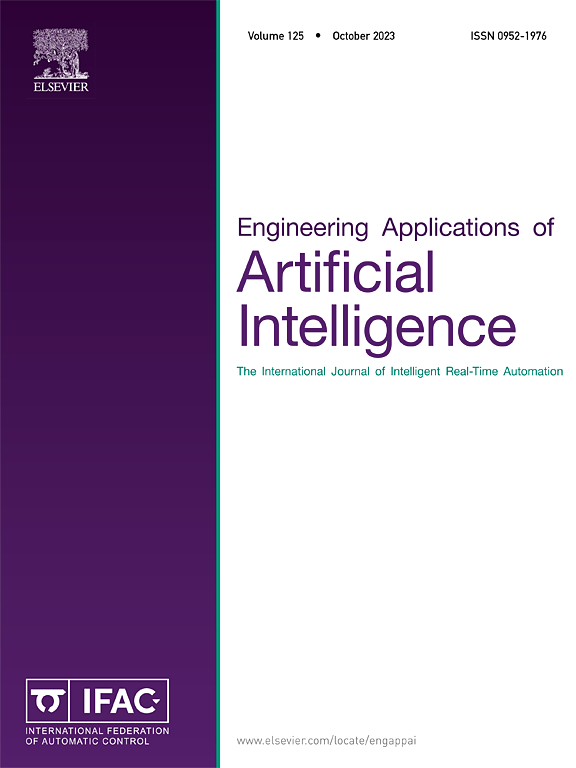Hierarchical graph-based machine learning model for optimization of three-dimensional braced steel frame
IF 7.5
2区 计算机科学
Q1 AUTOMATION & CONTROL SYSTEMS
Engineering Applications of Artificial Intelligence
Pub Date : 2025-02-21
DOI:10.1016/j.engappai.2025.110356
引用次数: 0
Abstract
This paper proposes a method for topology optimization of three-dimensional braced steel frames under static seismic loads, aiming to minimize structural volume while satisfying response constraints. The method consists of a proposed hierarchical graph-based machine learning model that sequentially embeds graph representations of structural elements to create a comprehensive lumped mass model suitable for seismic analysis and optimization of building frames. The proposed model is utilized as a reinforcement learning agent, a class of machine learning, to observe the current building frame configurations, modify the frame to improve its performance, and adjust the model parameters using the obtained reward function. Numerical results demonstrate that the proposed graph-based model can improve its performance better than benchmark of a graph neural network utilized in previous research. When applied to three cases of unseen large three-dimensional building frames, the trained agent with the proposed model outperforms the genetic algorithm and simulated annealing in the optimization task with 11–46% lower objective function while utilizing the same computational cost. The generality, performance, and computational efficiency of the agent indicate its applicability to applied to the optimization of three-dimensional frames.
求助全文
约1分钟内获得全文
求助全文
来源期刊

Engineering Applications of Artificial Intelligence
工程技术-工程:电子与电气
CiteScore
9.60
自引率
10.00%
发文量
505
审稿时长
68 days
期刊介绍:
Artificial Intelligence (AI) is pivotal in driving the fourth industrial revolution, witnessing remarkable advancements across various machine learning methodologies. AI techniques have become indispensable tools for practicing engineers, enabling them to tackle previously insurmountable challenges. Engineering Applications of Artificial Intelligence serves as a global platform for the swift dissemination of research elucidating the practical application of AI methods across all engineering disciplines. Submitted papers are expected to present novel aspects of AI utilized in real-world engineering applications, validated using publicly available datasets to ensure the replicability of research outcomes. Join us in exploring the transformative potential of AI in engineering.
 求助内容:
求助内容: 应助结果提醒方式:
应助结果提醒方式:


